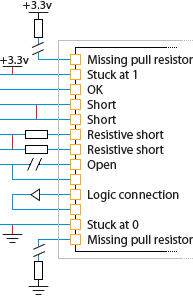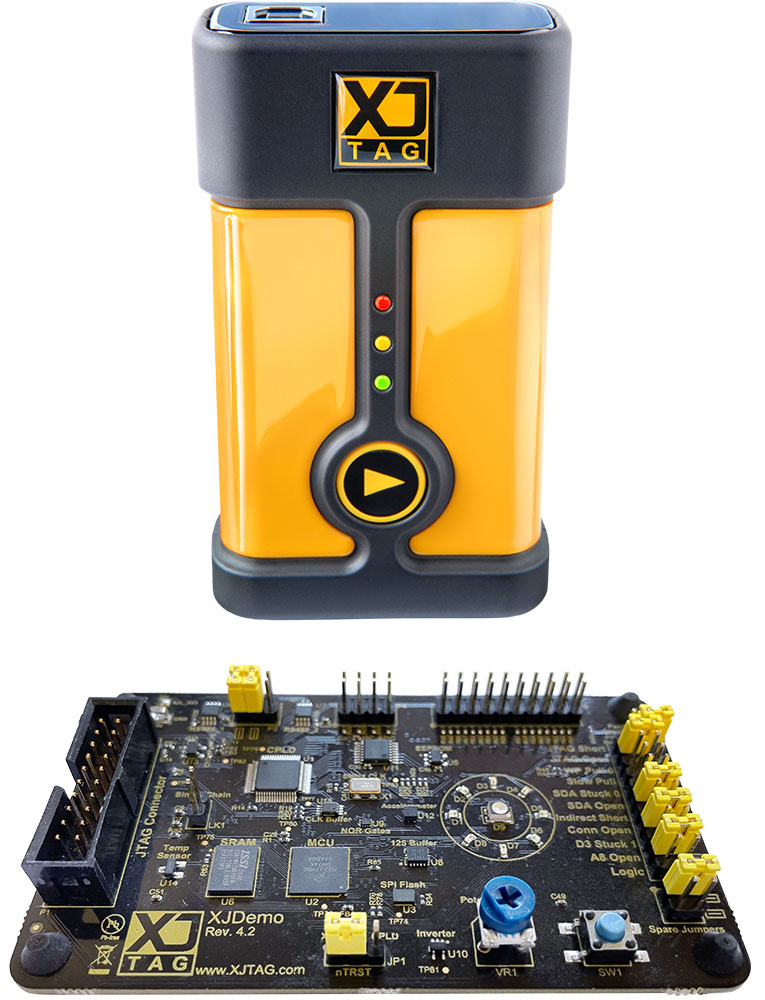JTAG Connection Testing
Introduction

A connection test or interconnect test checks the interconnects between components in a circuit. These interconnections, known as nets, can have faults in three categories; short circuit, open circuit and stuck-at faults. Examples of these faults are shown below.
A standard JTAG connection test can only check for faults on nets between JTAG devices, as these are the devices whose pin value can be set and read using JTAG. However, knowledge of the other, non-JTAG, devices in the circuit can allow for wider test coverage to areas of the circuit away from the JTAG chain.
A connection test is an invaluable tool in the process of manufacturing validation. Each circuit that is produced can be checked for production faults caused by manufacturing errors such as solder shorting connectors on a device. If a BGA device is considered, where there is little opportunity to visually inspect the connection, the full value of a fully-functional connection test can be realised.
Improved connection testing

The XJTAG connection test has been improved in terms of the percentage of the circuit that can be tested and the accuracy of fault reporting. This has, in part, been made possible by reactive test pattern generation, but also by XJTAG’s proprietary connection test algorithm.
As an example, the diagram on the right shows a situation that causes a major problem for many JTAG connection tests. While the conflicting algorithm, used by many traditional connection tests, is able to identify the short circuit between nets C and D, the inline resistors in nets A and B mean that the short circuit between those two nets would not be detected. The XJTAG connection test algorithm overcomes this problem.
On this page














